
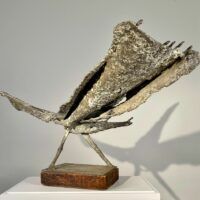
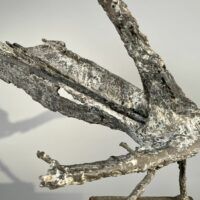
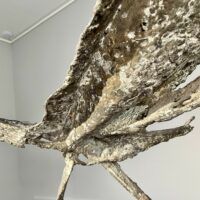
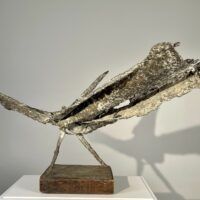
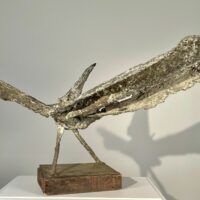
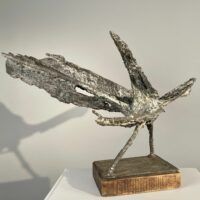

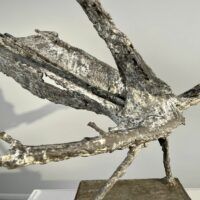
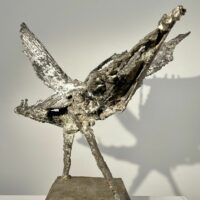
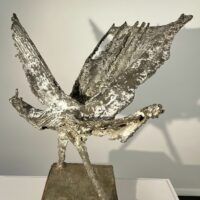
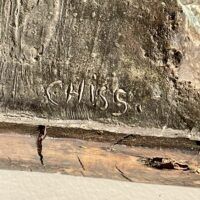
Filippo Chissotti (Italian, 1920-1995)
Untitled (Wounded Bird), c. 1960
Bronze, 25 ⅛ H. x 39 ¼ W. x 27 ½ D. inches
Signed on base: CHiSS
Born in 1920 in Trofarello, Italy, Filippo Chissotti, also known as Chiss, was an Italian sculptor and painter known for his abstract sculptures. He studied at the Albertina Academy under sculptors Marino Marini and Giacomo Manzù, then briefly studied architecture before returning to sculpture. Marini drew sculptural principles from ancient Etruscan and Northern European traditions, which he undoubtedly passed on to his young student. His other teacher, Manzù, was self taught and often oscillated between various materials, and while he was inspired by Etruscan sculptors like Marini, he also was a great admirer of Medardo Rossi, who was concerned with the materiality of his work.
Following World War II, his first exhibition of drawings opened at the Galleria Fabin in Turin. He then participated in the Venice Biennale in 1947 and in the Rome Quadriennale in 1948 and 1951. His work from this period took on a greater level of drama than in the later years of his career, likely prompted by the tensions of the time.
In his early days, he adopted the line as the single focus of his work, inspired by the Synthetism movement. He often used ceramics because of the plasticity of the medium, and he sought to harness the expressiveness of other materials such as plaster, wood, wax, and bronze. His interest in malleability contradicted his interest in creating imposing, monumental structures. In 1974, for example, he worked with architect Giorgio Rajneri and engineer Giuseppe Raineri to construct a tomb for Turin’s Rossi family. The tomb was created with red granite, and the slab covering the entrance to this subterranean burial space was produced in bronze by Chissotti, which is signed “Filippo Chiss.” The sculptural slab is a model of a printed circuit taken from a radio and referenced Pietro Rossi’s career as an engineer. Projects such as these contrast with his forays into the world of design, wherein he would produce Modernist lamps and delicate ceramic pieces like mirrors, plates or ash trays.
Chissotti’s understanding of diverse materials and his skill in drawing allowed him to be a multifaceted artist, creating heavy bronze abstractions that appear almost brutalist while simultaneously sculpting anthropomorphic ceramics in forms like ewers and vases. He also had a passion for flying which influenced many of his works, such as “Untitled (Wounded Bird)” (c. 1960).
Chissotti died in Trofarello in 1995